 China has been an active participant in the international economic institutions, namely the World Trade Organization (WTO), the International Monetary Fund (IMF), the World Bank, and the Paris climate agreement. China has generally lived up to its commitments in these institutions, but has been reluctant to take on the stronger responsibilities that fall on developed countries. China’s insistence on being treated as a developing country is a main source of tension in its economic relations with the advanced economies. A further area of tension is that China’s bilateral economic relations with other developing countries do not always meet global standards and norms. From an institutional point of view, it is a problem that China is not a member of the Government Procurement Arrangement within the WTO, the Paris Club of official creditors, or the Development Assistance Committee. There is a chicken-and-egg problem here: the main reason China is not a member is that it has not been willing to take on the associated responsibilities; on the other hand, being outside of these institutions leaves China free to behave differently from the advanced economies.
China has been an active participant in the international economic institutions, namely the World Trade Organization (WTO), the International Monetary Fund (IMF), the World Bank, and the Paris climate agreement. China has generally lived up to its commitments in these institutions, but has been reluctant to take on the stronger responsibilities that fall on developed countries. China’s insistence on being treated as a developing country is a main source of tension in its economic relations with the advanced economies. A further area of tension is that China’s bilateral economic relations with other developing countries do not always meet global standards and norms. From an institutional point of view, it is a problem that China is not a member of the Government Procurement Arrangement within the WTO, the Paris Club of official creditors, or the Development Assistance Committee. There is a chicken-and-egg problem here: the main reason China is not a member is that it has not been willing to take on the associated responsibilities; on the other hand, being outside of these institutions leaves China free to behave differently from the advanced economies.
Much of the American concern with China’s role in the global economy is related to this partial integration of the country into the global economic institutions. I argue that to change China’s behavior and bring its practices into line with advanced country norms would require: (1) recognition that China deserves greater say in the international economic institutions in return for greater responsibility; (2) a willingness to pursue deeper agreements such as the Trans-Pacific Partnership (TPP) without China if it is not willing to meet the associated standards; and (3) ongoing, intensive dialogue between China and the U.S. aimed at objectionable Chinese practices such as restrictions on imports and investment, weak intellectual property rights (IPR) protection, forced technology transfer, and subsidies to develop specific technologies.
China has been an active participant in international economic institutions…
In the case of the WTO, China has become a very active member since joining in 2001. Between 2006 and 2015, 44 cases — representing more than a quarter of the WTO caseload — involved China as a complainant or as a respondent.1 Only the United States and the European Union had more active cases over the period. Furthermore, in general, when China has lost cases it has changed the necessary laws and regulations and complied with the ruling, though not always as expeditiously as complainants had hoped. Based on this, one could conclude that China’s integration into trade dispute settlement has been relatively successful.
However, China presents a number of unique challenges for the trading regime. Since the Great Recession, WTO litigation has increasingly taken on a dynamic of the U.S., the EU, and Japan versus China. Between 2009 and 2015, China-related cases accounted for 90% of the cases brought by the four big economies vis-à-vis each other. It used to be that cases between the United States, EU, and Japan were common; now, increasingly, they join together against China.2
The problems arise from the dualistic nature of the Chinese economy. While the economy is often characterized as state-dominated, private enterprises are at the heart of China’s dynamic growth. Traditionally, most exports have come from foreign-invested firms. Recently most of the value added in China’s exports has come from the domestic private sector as value chains have lengthened in China. State enterprises dominate in fields such as heavy industry and especially services — finance, telecom, and logistics. These characteristics make it difficult to determine certain legal issues under WTO rules — such as whether a firm is associated with the state, or how to characterize the overall form of China’s economy. These elements also pose issues for certain activities that fall outside the scope of the WTO’s present disciplines. It is difficult, for example, for the WTO to deal with investment restrictions, forced technology transfer, and intellectual property (IP) theft.
China’s relationship with the IMF has changed remarkably in recent years. In the mid-2000s, China allowed its currency to become undervalued and its current account surplus to balloon above 10% of gross domestic product. The U.S. Department of the Treasury put pressure on the IMF to highlight the issue of global imbalances and currency misalignment. There were several years in the mid-2000s in which the IMF team was not welcome in Beijing to carry out their annual Article IV review of macroeconomic policies. China had very large trade surpluses and an undervalued currency for only four years from 2005 to 2008, after which the authorities allowed the yuan to appreciate and made other policy changes that eliminated the large surpluses.3 This is a good example of China adapting to global norms.
Since that time, the China-IMF relationship has evolved into a close partnership. As attention shifted away from the exchange rate, starting around 2009, the IMF focused its China program more on financial supervision with a series of welcome technical interventions and policy advice.4 Quota reform in the IMF, pushed by the United States, shifted shares toward emerging markets, especially China, primarily at the expense of Europe. While China has gained quota share in the IMF, its share still lags far behind its weight in the world economy. In addition to its quota, China also supports IMF programs for other countries by lending money in parallel through various arrangements that the IMF has adopted to augment its resources.
Turning to the multilateral development banks, China has had a long and positive relationship with the World Bank, starting with a famous meeting between Deng Xiaoping and (former President of the World Bank Group and Secretary of Defense) Robert McNamara in 1980. Deng told McNamara that China would modernize with or without World Bank assistance, but it would do so more rapidly with the assistance.5 For many years, China was the largest client of the Bank in terms of loan amount and number of projects. The Bank started with infrastructure projects in power and transport and moved on to more complicated issues such as watershed management, urban water supply and sanitation, reforestation, and rural education and health.
More recently, China has become an important donor to the concessional window of the World Bank, which finances the poorest countries, mostly in Africa. At the most recent replenishment in December 2019, China was the sixth largest donor behind the United Kingdom, Japan, United States, Germany, and France and ahead of G7 members Canada and Italy.6 While China’s relationship with the World Bank has largely been positive, it does have criticisms of the Bank’s shift away from infrastructure and growth and of its slow preparation times and costly bureaucracy. China established the Asian Infrastructure Investment Bank (AIIB) as a new multilateral development bank, one that has attracted over 100 members and is off to a good start, working closely with the existing development banks.
Finally, I consider the Paris climate accord an economic agreement that apportions the costs needed to prevent cataclysmic climate change. China was one of the key players, along with the United States, EU, and Japan, in reaching this agreement.
…but China has been reluctant to take on the same responsibilities of rich countries
While China is an active player in global economic institutions, it has been careful to define itself as a developing country and to avoid taking on the responsibilities of rich countries.
While China is an active player in global economic institutions, it has been careful to define itself as a developing country and to avoid taking on the responsibilities of rich countries. This approach is somewhat understandable as China has a gross domestic product (GDP) per capita around $10,000; that is, less than one-sixth of $65,000 level in the United States or other advanced economies.7 However, given the size of its population, China has the second largest economy in the world and is likely to overtake the United States in about 15 years; it only needs to achieve one-quarter of U.S. GDP per capita to reach that benchmark. It is hard to imagine solving global economic problems without China taking on more responsibility.
Examples of China’s reluctance to take on new responsibilities abound in every domain. In the IMF, for example, China has resisted capital account convertibility so that it can manage capital inflows and outflows and the level of its exchange rate. The IMF in 2016 made a forward-looking decision to include China’s yuan in its basket currency, the Special Drawing Right, but it is odd to have a reserve currency that is not freely convertible. There is a host of institutional reforms needed as a foundation of convertibility including greater flexibility of interest rates and the currency, and less management of stock and bond markets. China is moving slowly on many of these.
In the WTO, China has dragged its feet on its commitment years ago to join the Government Procurement Arrangement, which is mostly a club of rich countries that have opened up government procurement markets to each other. China is also reluctant to see the WTO take on new issues such as cross-border data flows, IPR protection, subsidies, and investment.
I noted in the previous section that China is the sixth largest donor to the World Bank’s concessional window. But it has positioned itself carefully; for this replenishment it gave $1.2 billion, compared to the U.S. contribution of $3 billion.8 China’s economy is two-thirds of the U.S. economy, so a proportionate contribution would have been $2 billion. China is by far the most generous of developing countries, but does not want to be expected to meet the obligations of rich countries. (Russia, incidentally, gave nothing.) China has similarly been reluctant to join the Organisation for Economic Co-operation and Development (OECD)’s Development Assistance Committee (DAC), which sets standards for transparency of foreign aid, or the Paris Club, which coordinates official debt reschedulings. One issue is that the Paris Club and the DAC are linked to the OECD. China actually has higher per capita GDP than current members Chile, Colombia, Mexico, and Turkey, so China is developed enough to join. But the group defines itself as a club of democracies, which excludes China, as well as other new donors and creditors such as Saudi Arabia. The solution to me seems straight-forward: it makes sense to delink the Paris Club and the DAC from the OECD because the issues they address now involve other important countries beyond the advanced democracies.
Finally, in the area of carbon reduction, China broke new ground in the Paris Agreement with a recognition that it will need to reduce emissions — eventually. But it was a voice, along with the United States, to keep pledges voluntary. According to the Climate Action Tracker, China’s Nationally Determined Contribution is “highly insufficient” to meet the global target for carbon reduction; that is just one step up from the “critically insufficient” category where the United States has positioned itself.9
China’s bilateral relations undermine its global contributions
In addition to China’s reluctance to take on greater responsibilities, its extensive bilateral economic relations often undermine its global contributions. The clearest example is in development finance. It is a major contributor to the World Bank’s concessional window, has started the AIIB, and supports the IMF’s debt sustainability approach. At the same time, through its Belt and Road Initiative, it is lending $40-50 billion per year to developing countries for projects in transport and power infrastructure. While the financing amount is large, the terms are largely commercial. The whole effort lacks transparency in terms of selection of contractors, amounts lent, detailed terms, and environmental and social sustainability.
The Center for Global Development (CGD) ranks donor countries along various dimensions in terms of their policies contributing to development. On development finance, CGD ranks China last of 40 countries because its finance is opaque and non-concessional.10 The implication of non-concessionality is hitting home during the coronavirus pandemic: half of China’s big clients in Africa are in debt distress or at high risk of debt distress, according to the IMF.11 On the positive side, China joined the G-20 plan for a moratorium on debt payments by the poorest countries during 2020.12 This is just a small first step, however, as a lingering global recession will probably require debt relief beyond this initial moratorium.
Another example where China’s bilateral relations are undermining its global goals is climate change. While China is phasing out the use of coal — too slowly, but still heading in the right direction — it is building coal-fired power plants all over the developing world. The exact total is unclear because of the lack of transparency in the Belt and Road Initiative, but it is clear from press reports that many coal-fired plants are under construction. Outsiders often make the mistake of seeing a “China, Inc.” — that is, a centralized, authoritarian state executing careful plans. With such a view of Chinese decision-making, Chinese inconsistency is hard to explain. In reality, China has many different stakeholders and complicated domestic politics. Companies that specialize in building and operating coal-fired power plants see diminished opportunities at home and naturally turn to external markets. These are commercial firms and their external transactions are done on commercial terms. Many developing countries have coal reserves and ask Chinese partners to construct power plants to make use of the coal. The end result is an inconsistent policy of carbon reduction at home and carbon expansion overseas.
Conclusions and recommendations
The current situation is characterized by China deeply imbedded in the global economic system as a developing country, reluctant to take on the responsibilities of a rich country, and conducting bilateral relations that often run counter to global norms. This situation is unsustainable with the existing powers, especially as the United States demands more of China and, at the same time, is reluctant to cede it any influence on the global stage. China in turn feels singled out for harsh criticism, its global contributions ignored.
The long-run solution is clear: China and other developing countries should receive more weight in global economic decision-making in return for greater consistency of their policies with global rules and norms. With greater influence, China and others will have more say on what those global rules and norms are. Concretely, this would involve changes such as: increasing the voting share for these countries in the IMF and World Bank; reconfiguring (and renaming) the Paris Club as a global group of official creditors rather than a club of rich countries; de-linking the DAC from the OECD; and refocusing a new WTO round on the modern issues of cross-border data flows, IPR protection, investment, and subsidies.
The last part of that agenda will be the most complicated, and the United States will need a fallback strategy if a reasonable compromise cannot be reached. It was a mistake for the United States to diminish the WTO dispute resolution and to pull out of the TPP, isolating itself. Rejoining the TPP and expanding it to include partners such as South Korea, Indonesia, Thailand, the United Kingdom, and even the EU could create a template for larger reform of the global trading system. It was always a smart strategy for the United States to build TPP to serve either as (1) an incentive for China to reform and take on new responsibilities; or (2) as a fallback plan: a group of like-minded economies covering most of world gross domestic product and trade if China and other developing countries choose not to go along.
Right now it is hard to imagine the United States pursuing either of these efforts: negotiating a greater role for China in the global system or rejoining TPP. The United States is engaged in trade wars in all directions. Washington needs to resuscitate economic statecraft. On the one hand, this involves repairing relations with allies, starting with the removal of self-destructive tariffs and a negotiation to return to TPP. The harder negotiation will be with China, starting from the worst relations that the two countries have had in 40 years. The U.S. should offer to eliminate the tariffs aimed at China in return for specific market-opening moves, as well as put on the table an increase in China’s voting shares in the Bretton Woods institutions in return for reforms of the Belt and Road Initiative that include greater transparency and concessionality. Both sides will have to be willing to compromise in order to have any chance of success. Without forward progress on China’s integration into the global economic system, it is hard to see how the two sides will avoid a spiral into increased economic conflict.
-
Footnotes
- Mark Wu, “The ‘China, Inc.’ Challenge to Global Trade Governance,” Harvard International Law Journal 57, no. 2 (Spring 2016): 264, https://harvardilj.org/wp-content/uploads/sites/15/HLI210_crop.pdf.
- Ibid.
- David Dollar, “China’s Evolving Role in the International Economic Institutions,” in China 2049: Economic Challenges of a Rising Global Power, eds. David Dollar, Yiping Huang, and Yang Yao (Washington, DC: Brookings Institution Press, 2020), 388-389.
- David Dollar, “Chapter 2—IMF Financial Surveillance of China,” in “IMF Financial Surveillance in Action: Country Case Studies from Asia and the Western Hemisphere,” (Washington, DC: Independent Evaluation Office, International Monetary Fund, December 14, 2018), 15-34, https://ieo.imf.org/en/our-work/Evaluations/Completed/2019-0115-fis-evaluation/.
- Pieter Bottelier, “China and the World Bank: How a Partnership Was Built,” Journal of Contemporary China 16, no. 51 (April 18, 2007), 239-258, https://www.tandfonline.com/doi/abs/10.1080/10670560701194475.
- “Contributor Countries,” International Development Association, The World Bank, https://ida.worldbank.org/about/contributor-countries.
- “GDP per capita (current US$),” Data, The World Bank, https://data.worldbank.org/indicator/NY.GDP.PCAP.CD.
- “Contributor Countries,” International Development Association, The World Bank.
- “China,” Climate Action Tracker, December 2, 2019, https://climateactiontracker.org/countries/china/.
- Ian Mitchell and Evan Ritchie, “CDI 2020: China’s Commitment to Development,” Center for Global Development, June 25, 2020, https://www.cgdev.org/blog/chinas-commitment-development.
- In an earlier paper for the Global China project, the author identifies the 10 largest borrowers from China on the continent: Angola, South Africa, Egypt, Uganda, Nigeria, Kenya, Ethiopia, Zambia, Cameroon, and the Republic of the Congo. David Dollar, “Understanding China’s Belt and Road infrastructure projects in Africa,” (Washington, DC: The Brookings Institution, September 2019), https://www.brookings.edu/research/understanding-chinas-belt-and-road-infrastructure-projects-in-africa/). The last five countries on the list are in debt distress or at high risk of debt distress according to the most recent IMF debt sustainability analysis, contained in each country’s Article IV report on the IMF’s website, https://www.imf.org/external/index.htm.
- “Communiqué, G20 Finance Ministers and Central Bank Governors Meeting [Virtual],” G-20, April 15, 2020, https://g20.org/en/media/Documents/G20_FMCBG_Communiqué_EN%20(2).pdf
The Brookings Institution is committed to quality, independence, and impact.
We are supported by a diverse array of funders. In line with our values and policies, each Brookings publication represents the sole views of its author(s).
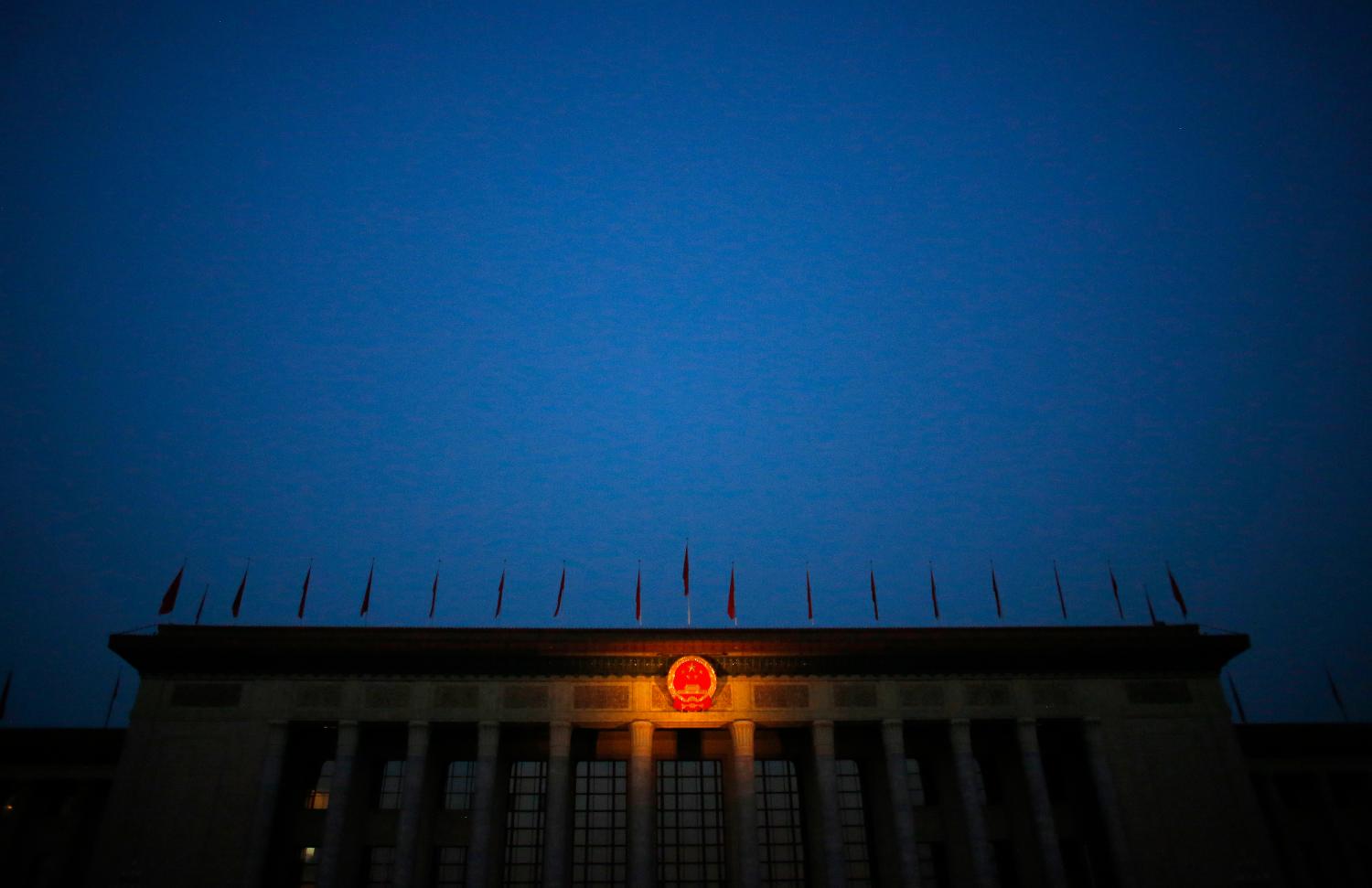
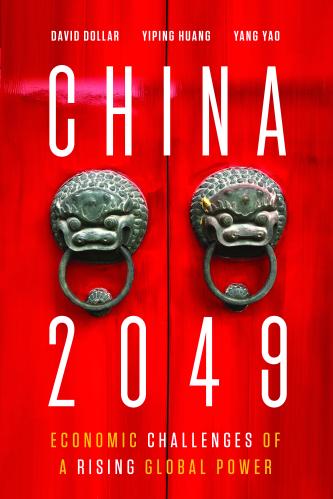

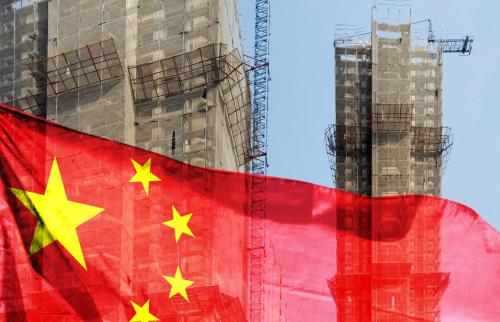
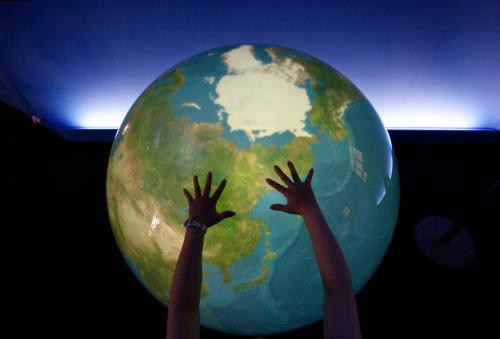
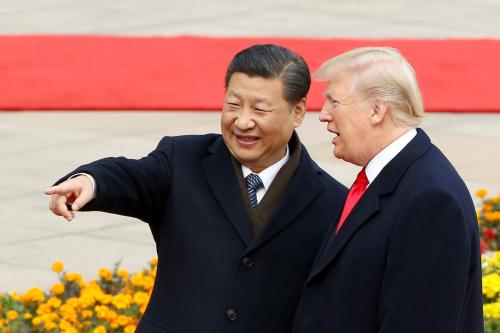
Commentary
Reluctant player: China’s approach to international economic institutions
September 14, 2020